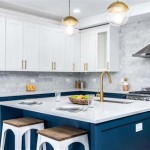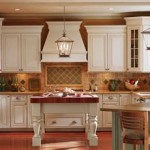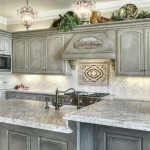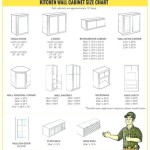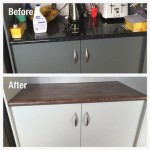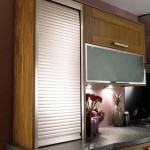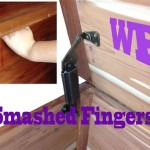Plywood Thickness for Kitchen Cabinets: A Comprehensive Guide
The selection of appropriate materials is paramount in the construction of durable and aesthetically pleasing kitchen cabinets. Among the various materials available, plywood stands out for its strength, stability, and affordability. However, the effectiveness of plywood in cabinet construction hinges significantly on choosing the correct thickness. This article provides a detailed exploration of the optimal plywood thickness for different components of kitchen cabinets, addressing factors that influence this decision and considerations for ensuring structural integrity and longevity.
Plywood, an engineered wood product, is manufactured by layering thin sheets of wood veneer, known as plies, and bonding them together with adhesive. This cross-laminated structure provides exceptional strength and resistance to warping, shrinking, and splitting, making it a superior choice for cabinet construction compared to solid wood or particleboard, especially in environments where humidity fluctuations are common. The thickness of plywood directly correlates with its load-bearing capacity and overall structural stability; therefore, selecting the appropriate thickness is critical for ensuring the longevity and performance of kitchen cabinets.
Factors Influencing Plywood Thickness Selection
Several factors must be considered when determining the appropriate plywood thickness for kitchen cabinet construction. These factors include the intended application within the cabinet structure, the expected load, the span between supports, and environmental conditions.
The specific application within the cabinet structure significantly influences the required plywood thickness. For example, cabinet backs, which primarily serve to provide rigidity and prevent racking, typically require a thinner plywood compared to cabinet boxes, which bear the weight of countertops and stored items. Similarly, shelving, which must support substantial loads, demands a greater thickness than decorative panels.
The anticipated load placed on the cabinet is another crucial determinant of plywood thickness. Cabinets designed to store heavy items, such as cookware and pantry staples, require thicker plywood to prevent sagging and structural failure. The weight distribution within the cabinet should also be considered, as concentrated loads may necessitate reinforcement or a thicker plywood.
The span between supports, or the distance between vertical cabinet walls or shelf supports, affects the deflection, or bending, of the plywood under load. Longer spans require thicker plywood to minimize deflection and maintain the structural integrity of the cabinet. Conversely, shorter spans allow for the use of thinner plywood without compromising performance.
Environmental conditions, particularly humidity levels, can affect the performance of plywood. High humidity can cause plywood to expand and contract, potentially leading to warping or delamination. In humid environments, a thicker plywood may be preferred to provide greater dimensional stability and resistance to moisture-related damage. Marine-grade plywood, which is specifically designed for wet environments, is also an excellent choice in these conditions.
Recommended Plywood Thickness for Different Cabinet Components
Based on the factors discussed above, specific plywood thicknesses are generally recommended for various cabinet components to ensure optimal performance and durability. These recommendations serve as a guideline and can be adjusted based on specific project requirements and design considerations.
Cabinet Boxes (Sides, Top, Bottom): For the main cabinet box, which forms the structural core of the cabinet, a plywood thickness of ¾ inch (19mm) is generally recommended. This thickness provides sufficient strength to support countertops, appliances, and stored items. It also offers adequate rigidity to resist racking and maintain the squareness of the cabinet. While thinner options are possible, ¾ inch plywood provides a robust and reliable solution for most kitchen cabinet applications.
Cabinet Backs: Cabinet backs serve primarily to brace the cabinet and prevent it from racking. For wall cabinets, ¼ inch (6mm) plywood is often sufficient, as it provides adequate stiffness without adding excessive weight. For base cabinets, which are subject to greater stress, ½ inch (12mm) or even ¾ inch (19mm) plywood may be preferred, especially if the cabinet is designed to support a heavy countertop or appliance. An alternative growing in popularity is a full ¾ inch back for all cabinets, offering easier installations and a more stable outcome that is more universally acceptable and preferred by many installers.
Shelves: Shelf thickness is determined by the span between supports and the anticipated load. For shelves with a short span (e.g., less than 24 inches) and a moderate load, ½ inch (12mm) plywood may be adequate. However, for shelves with a longer span or a heavy load, ¾ inch (19mm) plywood is generally recommended to prevent sagging. For very long spans or exceptionally heavy loads, reinforcement with edge banding or center supports may be necessary.
Drawer Boxes: Drawer box construction often utilizes thinner plywood compared to cabinet boxes, as the drawer box itself is typically supported by drawer slides. ½ inch (12mm) plywood is commonly used for drawer box sides and backs, while ¼ inch (6mm) plywood may be sufficient for the drawer bottom, particularly if the drawer is relatively small. However, for large or heavily laden drawers, ½ inch plywood is preferred for the bottom as well to prevent sagging and maintain structural integrity. Solid wood is also a common choice for drawer boxes, offering a classic aesthetic and durable performance.
Doors and Face Frames: While plywood can be used for cabinet doors and face frames, solid wood or medium-density fiberboard (MDF) are more commonly used for doors to allow for intricate designs and profiles. If plywood is used for doors, a thickness of ¾ inch (19mm) is recommended for stability and to accommodate hardware installation. Face frames, which provide structural support and a finished appearance, are typically constructed from solid wood but can also be made from ¾ inch plywood if desired. The choice between solid wood and plywood for face frames depends on aesthetic preferences and budget considerations.
Plywood Grading and Types
In addition to thickness, the grade and type of plywood are crucial considerations for kitchen cabinet construction. Plywood is graded based on the quality of the veneer face and back, with grades ranging from A to D. Grade A plywood has a smooth, paintable surface with minimal defects, while Grade D plywood has more knots, patches, and other imperfections. For cabinet faces and exposed surfaces, Grade A or B plywood is generally recommended to provide a smooth and aesthetically pleasing finish. For cabinet interiors and less visible areas, Grade C or D plywood may be acceptable, depending on the desired level of finish.
Several types of plywood are available, each with unique properties and applications. Hardwood plywood, typically made from birch, maple, or oak, is known for its strength, durability, and attractive grain patterns. Softwood plywood, made from pine or fir, is less expensive than hardwood plywood but may be less durable and more prone to dents and scratches. Marine-grade plywood is specifically designed for wet environments and is made with waterproof adhesive and high-quality veneers. It is an excellent choice for cabinets that will be exposed to moisture, such as those near a sink or dishwasher.
When selecting plywood for kitchen cabinets, it is important to consider the specific requirements of the project and choose a grade and type that provides the desired level of performance, aesthetics, and durability. Reputable lumber suppliers can provide guidance on selecting the appropriate plywood for specific applications and can offer advice on proper installation techniques.
Installation Considerations
Proper installation is crucial for ensuring the structural integrity and longevity of kitchen cabinets, regardless of the plywood thickness used. Cabinets should be securely fastened to the wall studs using appropriate screws or bolts. Corner bracing and reinforcing blocks can be added to strengthen the cabinet corners and prevent racking. Shelves should be properly supported with shelf pins or cleats, and drawers should be fitted with high-quality drawer slides. The use of construction adhesive in addition to screws or nails can further enhance the strength and durability of the cabinet joints.
When working with plywood, it is important to use sharp tools and appropriate techniques to avoid splintering and tear-out. Pilot holes should be drilled before driving screws to prevent splitting the wood. Edges should be sanded smooth to remove any sharp edges or splinters. Applying edge banding to exposed plywood edges can improve the appearance and protect the edges from moisture damage.
Alternatives to Plywood
While plywood remains a popular and cost-effective choice for kitchen cabinet construction, alternative materials are also available. Medium-density fiberboard (MDF) is a composite wood product made from wood fibers and resin. MDF is smooth, stable, and easy to machine, making it a good choice for cabinet doors and drawer fronts. However, MDF is less resistant to moisture than plywood and is not suitable for applications where it will be exposed to water. Particleboard is another composite wood product made from wood particles and resin. Particleboard is less expensive than plywood or MDF but is also less strong and durable. It is typically used for cabinet interiors and shelving in low-cost cabinets.
Solid wood is a traditional choice for kitchen cabinets, offering a beautiful and durable finish. However, solid wood is more expensive than plywood and is more prone to warping and cracking. For cabinets made from solid wood to be stable, a strict regimen concerning how the wood is cut and prepared is needed. Solid wood is best suited for cabinet doors, face frames, and decorative elements, where its natural beauty can be appreciated.
The selection of appropriate kitchen cabinet materials depends on a variety of factors, including budget, aesthetic preferences, and environmental conditions. Plywood offers a good balance of strength, stability, and affordability, making it a popular choice for many kitchen cabinet projects. However, alternative materials may be more suitable for specific applications or design requirements.

Cabinet Quality Kitchen Rta Cabinets Orange County Pre Made Whole Quartz Countertop Slab Prefab Granite Installation

Which Plywood Is Best For Modular Kitchen Designcafe

Cabinet Composition What Makes A High Quality

Actual Plywood Thickness And Size Woodworking Plans Beginner

Which Plywood Is Best For Modular Kitchen Designcafe

Choosing The Best Type Of Plywood For Cabinets Columbia Forest S

Which Plywood Is Best For Modular Kitchen Designcafe

Selecting Hardwood Plywood For Cabinetry Columbia Forest S

Kitchen Cabinets Made From Plywood The Features Of For Kitchens

What Size Plywood Should You Use To Build Cabinets Ehow
Related Posts

